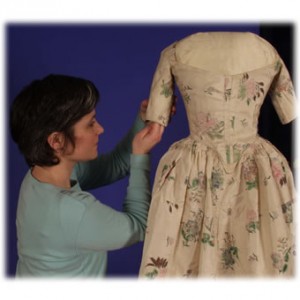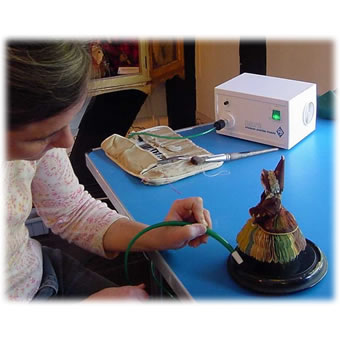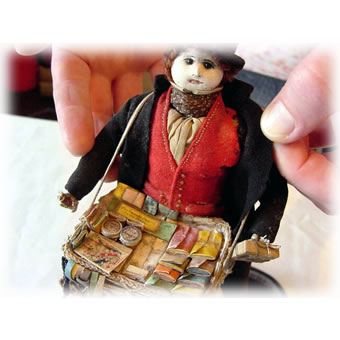Behind the scenes
Our collections are at the heart of what we do. They provide a wealth of information about Warwickshire’s past and present.
Volunteers in the herbarium
Volunteers play a vital role in helping Warwickshire Museum to care for its collections, undertake fieldwork, carry out research and publish reports. Barbara Davies and Lorna Dudley are both highly experienced amateur botanists who help the Museum to look after a very large herbarium of dried plant specimens.
We have over 30,000 herbarium specimens, the oldest of which are over 200 years old. Such specimens give us an idea of what Warwickshire must have looked like in times gone by. They prove that some old records of unusual plants are genuine and not simply misidentifications by botanists, and that habitats such as heathland were once widespread.
Other natural history volunteers help keep our mammal and plant records up to date and carry out condition checks on our fragile collections of stuffed animals and insects, which are very vulnerable to pest attack.
A look at conservation
Objects are subject to damage from a variety of sources such as:
- light
- insects
- pests
‘Preventative conservation’ is where we try to prevent damage by storing, displaying and handling objects carefully. We don’t repair or restore objects. If something needs treatment, a specialist conservator will do the work; this is called ‘remedial conservation’.

The dress pictured is made from cream silk and painted with flowers and leaves in a variety of colours.
The dress has probably been made from an earlier garment, because there are old seam lines on the skirt. The fabric itself probably dates from c.1750-1770 and comes from China. At nearly 250 years old, the fabric is now very weak. The silk is splitting in places and the painted areas are fragile. Conservation work on this dress included making patched supports for areas of weakness and stitching them to the underside of the fabric. Supports for the painted areas were put in place using an adhesive treatment because the paint was too fragile to put a needle through. The aim of the treatment was to strengthen the weak areas of the dress so that it has a better chance of survival.
A look at preventative conservation
‘Preventative Conservation’ includes basic cleaning of objects.
Fine dust is being removed from the doll below with a ‘micro-vac’ – a low suction vacuum cleaner that sucks up dust with tweezers.

Behind the scenes, we work hard to care for our collections so that they survive for the future.
This includes understanding why objects decay, and trying to prevent this from happening – or at least slowing the process down! This is called ‘Preventative Conservation’. It includes monitoring temperature and relative humidity (how damp or dry the air is), keeping insect pests under control, and using suitable storage materials.
Some objects, like archaeological metalwork and costume, are particularly sensitive.
Costume and textiles can be damaged by light, poor environmental conditions like cold and damp, and insect pests.
The below doll’s woollen waistcoat has been damaged by insect pests – probably carpet beetle.





